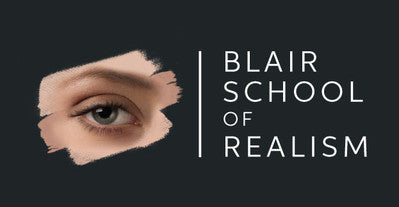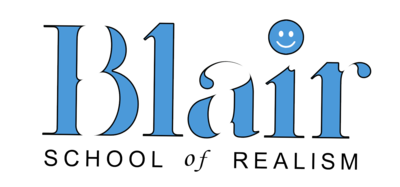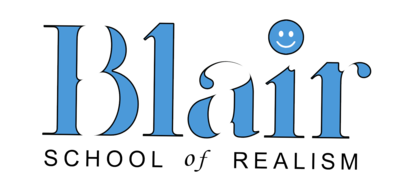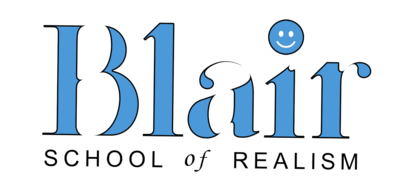Are you ready
to improve
your paintings?
Perhaps you realize that you are
capable of greater paintings, but
you haven’t quite figured everything
out.

Feeling unsure about your future?
You aren’t alone. Most artists reach a certain level, but don’t know where to go next. You try experimenting, hoping to stumble across real answers, but you aren’t satisfied.
Slow growth?
Eventually, you realize that its going to take years to figure everything out, and with NO guarantee of success

Paint this!
Perhaps you are tired of seeing all the amazing art posted on social media, and want to create something equal to (or better than) the best that’s out there. Here's your chance to learn how Dru creates his photorealistic paintings.
Welcome to the Next Level
Imagine being able to create paintings like these with realistic fur and with accurate colors.
Enjoy success even if you are an absolute beginner
Everyone starts somewhere. With solid training, you can cut years (or more likely, decades) off of the time it takes to achieve photorealistic mastery. Now it’s possible for you to gain control of your technique in a fraction of the time that it would take if you practiced on your own.


Color theory that solves all your color matching challenges
Learn all about Color Buffer Theory, Perceptual awareness, elements of vision, Transparents vs Opaques, rules of Realism, recovery exercises, and how to begin a painting.. and that's on the first day!
The skills you will gain
We aren’t just limited to teaching you all about using the airbrush. We include a variety of other media tricks to help you make your present and future artwork the best possible.
And our virtual workshops supply everything but the airbrush, compressor, and paint! The reference photo, paper, tools and stencils are shipped directly to your door. All you need to do is be ready to learn.

What you will learn
01
Layout and composition
This is the most important foundation of any painting, yet it is the most overlooked. Here you will learn how to position the infant to make use of negative space.
02
The 8 differences between Opaque and Transparent paint
When should you use transparent paint, and when should you use opaque paint? Each has unique characteristics which need to be considered first. You will learn all the differences, and when and why to use each.
03
Different types of fur
Not all fur types are created equal. We will show you the differences, and how to manage them.
04
The elements of a photorealistic painting
In order to re-create reality, we must first be able to see and understand visual reality. We will show you how to observe reality more accurately and help you overcome all limitations.
05
2 ways to avoid that cut-out look
When masks are involved, a wolf will often look like it was cut out and pasted on to the painting. You will learn how to overcome this problem.
06
Color Buffer Theory
Our original theory was initially conceived in the eighties, and is now practiced in some form all over the airbrush world. This is a practical approach to color and color mixing that actually corresponds to the way paint behaves. It is simple, yet comprehensive in scope.
07
How to use the Color Wheel
The color wheel is a compass. We will show you how to choose the right color wheel and how to use it correctly. It can be your best aid when mixing and matching colors.
08
How to match color....perfectly
Color can be intimidating, but fear of color will be a thing of the past after we show you how to match a color dead-on every time. You will love this process, especially if you are tired of painting in shades of grey.
09
Understanding simultaneous contrast and the role it plays in your paintings
Simultaneous contrast is the illusion that colors that come in contact with each other seem more different than they actually are. We will show you how to harness this problem with color discrimination and turn it into one of your most powerful assets.
10
How to survive catastrophic errors
Soon or later, we all make painting mistakes. If you don’t know how to repair a mistake, your painting will be compromised. We will teach you several ways to repair a mistake, so you will always choose the correct one for your painting.
11
Transferring your image to the painting
There are 5 ways to maintain your proportions when transferring your photograph to the painting surface. Learn which ones are most effective.
12
Different types of shields and when to use them
The visual world contains a variety of edges. Some edges are soft, some are hard, and some are in between. You will learn many different useful techniques to create every type of edges.
13
Creating the Bohkeh
Bohkeh is an out-of-focus background effect created by the camera. It's tricky, but possible with the airbrush.
14
7 ways to use a simple hand-held shield
The shield is more versatile than most artist realize. For example, the bounce method allows you to add subtle, almost imperceptible adjustments to you painting.
15
From zero to success in a few days
Almost all our courses are designed for absolute beginners, so don't worry if you've never used an airbrush before. We offer a Foundations day before class, where we will show you what you need to know, and we don’t limit your training to just the airbrush. There are many tools that complement the airbrush, and we want you to be able to enjoy having the best of them in your arsenal.
16
3 eraser techniques that will make a difference in your art
The eraser is a versatile instrument, and when properly used, and blend or cut like a knife. We will show you different types of erasers and how you can get the most out of any eraser.
17
Using the blade correctly
The blade can be a wonderful ally, but it will destroy your painting if you don’t use it correctly. We will show you exactly how to hold it, and how to operate it on different surfaces.
18
the 6 rules to make fur look real
If you want your fur to look more realistic, then follow these simple rules. You will learn them all, as well as some extra tips for greater realism.
19
Frisket vs paper
Frisket can be one of the best tools for creating crisp edges, but it can also cause problems with your painting surface. Paper has its advantages and disadvantages as a mask too. You will learn all about both types.
20
Managing edges and transitions
The trickiest part of painting is controlling edges. Adjusting edges is necessary, but can be a bit tricky. We will teach you how to change the sharpness or softness of an edge after you’ve created it.
21
5 masking techniques that work
A mask can be used in a variety of ways. For example, you could use split paper/frisket techniques , shield reveal or shield conceal methods to create a line. You will learn which masks are best for any given situation.
22
How to create subtle fur
Some fur types are more more subtle than others. We will show you several techniques to quickly achieve realistic fine fur.
23
Buffered Contrast Reduction, and how to use it
Contrast, along with proportions, and edges, can make or break a painting. Controlling contrast is simple using Buffered Contrast Reduction. We will explain what it is and how to use it.
24
How to find and fix problems in your paintings
Sometimes you can’t see the forest for the trees, and often mistakes go unnoticed. We will show you a simple technique that allows you to quickly spot problem areas that you would have otherwise overlooked.
25
How to develop observation techniques to expand your visual discrimination
Its difficult to paint anything accurately until you can really see it. We will teach you how to visually dismantle an object, then reassemble it on the painting surface.
26
Difficult transitions
Some complex transitions are a bit tricky to navigate. We will show you how to manage them.
27
Negotiating techniques that work
Negotiating a price for your work is probably the most stressful part of being an artist. We will show you negotiating methods that will help remove the stress when working with a client.
28
How to salvage the worst disasters in your paintings
Sometimes we make horrific mistakes. The trick is knowing how to deal with them, and hide them in the finished product. We will show you how.
29
Alternative ways to match colors
Its difficult to paint anything accurately until you can really see it. We will teach you how to visually dismantle an object, then reassemble it on the painting surface.
30
Selling your work
Learning about the business of art and marketing allows you, as an artist, to earn money for your creations. You will learn about pricing, galleries, copyright, prints, giclées, originals, and artist representatives.
What students are saying

I attended Dru's workshop with the hope of learning to paint, I left with the ability to "see" and a system that allowed me to develop my own understanding of painting and colours. Your system has given me the freedom to explore my own creativity.
Paul MacDonald
(Airvengers) Australia

Dru's teachings showed me how to create great detail and gave me the ability to achieve PHOTOREALISM in my artworks. Thank you for pioneering the world of photorealism in airbrushing, I doubt I would have got here without your long nights and many experiments .
David Naylor
Spain
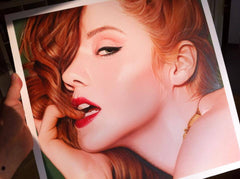
Dru's workshop influenced the way I paint and gave me some new concepts, knowledge and skills to implement into the way I worked today I recommend it!
Mitch Lowther
(Airbrush tutor) Australia
About Blair Center for the Arts
Our new school is located at 1125 Bowman Road, Mount Pleasant, SC, 29464 just a few minutes drive from downtown Charleston. We feature three studios with free parking on site.
Lodging
Our new school does not feature on-site lodging and meals. May we suggest the Tru by Hilton for the budget-minded, and the Hyatt House Charleston / Mount Pleasant. Both are less than 4 minutes drive from the school.
Class Hours
Class begins at 9 am and ends at 5pm ( Eastern Standard Time). a 1-hour lunch break is held at 1 pm.
Foundations Day (optional)
Foundations Day is 9 am to 4 pm on Wed Feb 24th with a 1-hour lunch break at 1 pm.
If you have questions about this class, the direct line to the school here is 843-936-6351.

Our
Guarantee
We are so sure that we offer the best airbrush course in the world that we are willing to offer you tuition money back if you don’t notice an immediate improvement in your art, and in the way you see the world after taking this course.
About our virtual workshops
Now you can learn photorealism from home. We send you the materials you need, and all you need is an airbrush set up, paint and a computer,
Dru also records the instructions with an advanced camera system, and uploads the videos each night, giving students exclusive access to review the course material for up to 3 weeks after the class.
To learn more about virtual workshops click here
Creating true-to-life wildlife art
You will learn a lot of techniques in your workshop, but the most valuable lesson gained is for you to better understand and see the world differently, especially when it comes to color.
We will give you the power to create or re-create reality with stunning photorealism, and at a level no other airbrush workshop in the world offers. A photorealist painter can easily paint in any style, from abstract to impressionist, and even mimic the old masters' paintings. The choices are limitless.
As artists, we take our inspiration from the visual world around us and re-create it on board, metal, or canvas. At the Blair School, we would like to show you how to do it more successfully.
